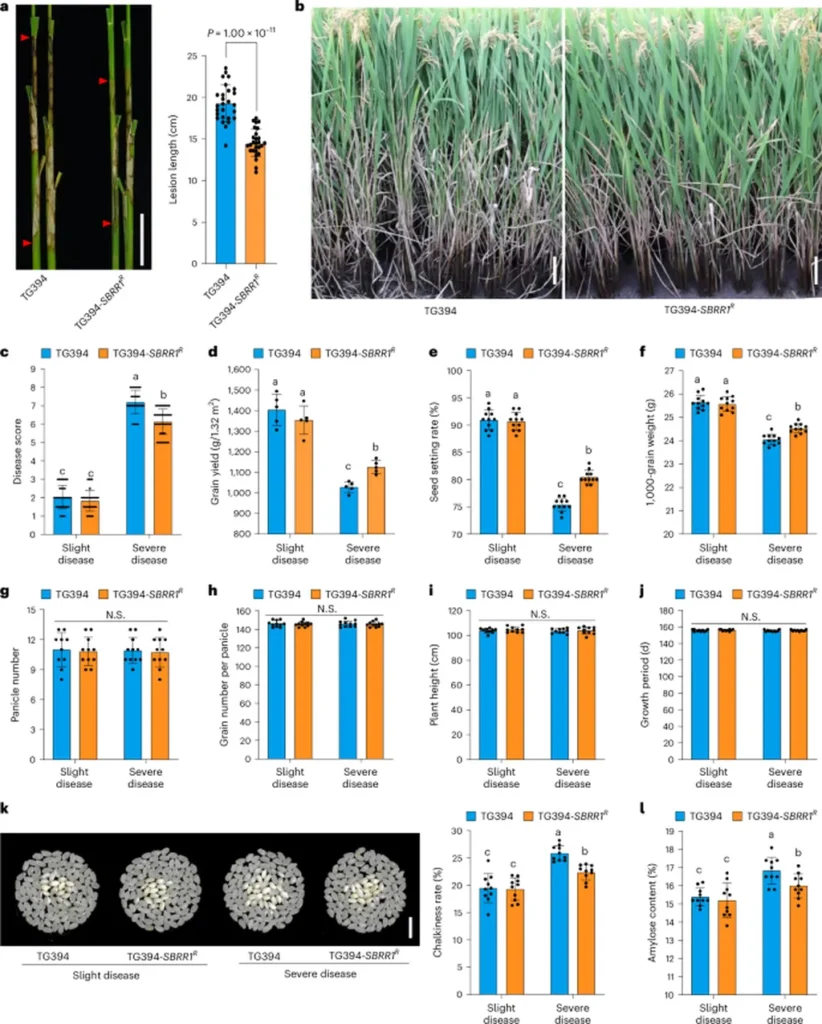In the heart of China’s tropical research hub, scientists have made a significant stride in the battle against sheath blight disease, a menace that has long plagued rice crops worldwide. The discovery, led by Yuanyuan Zhang from the State Key Laboratory of Tropical Crop Breeding at the Chinese Academy of Tropical Agricultural Sciences, sheds light on the genetic mechanisms that confer resistance to this devastating disease.
Sheath blight, caused by the fungus Rhizoctonia solani, is a formidable foe for rice farmers. The disease leads to substantial yield losses, threatening food security and economic stability in regions dependent on rice cultivation. The recent findings, published in the journal Plant Communications (translated from Chinese as “Plant Communication”), offer a glimmer of hope for developing more resilient rice varieties.
At the core of this breakthrough is the identification of a key gene, SBRR1, which plays a pivotal role in the plant’s defense mechanism. “Our research reveals that SBRR1 acts as a regulatory hub, orchestrating a complex network of responses that bolster the rice plant’s immunity against sheath blight,” explains Zhang. This discovery not only enhances our understanding of the plant’s immune system but also opens up new avenues for genetic engineering and breeding programs aimed at enhancing disease resistance.
The commercial implications of this research are profound, particularly for the energy sector. Rice husks, a byproduct of rice processing, are a significant source of biomass energy. By developing rice varieties resistant to sheath blight, farmers can ensure more stable and abundant harvests, thereby securing a consistent supply of biomass for energy production. “A stable supply of rice husks can contribute to the renewable energy sector, promoting sustainability and reducing reliance on fossil fuels,” Zhang adds.
The discovery of SBRR1’s role in disease resistance marks a significant milestone in the field of plant pathology and crop science. It paves the way for innovative strategies to combat sheath blight and other fungal diseases, ultimately benefiting farmers, the food industry, and the energy sector. As researchers delve deeper into the genetic intricacies of plant immunity, the future of agriculture looks increasingly promising, with science and technology joining forces to cultivate a more resilient and sustainable world.

